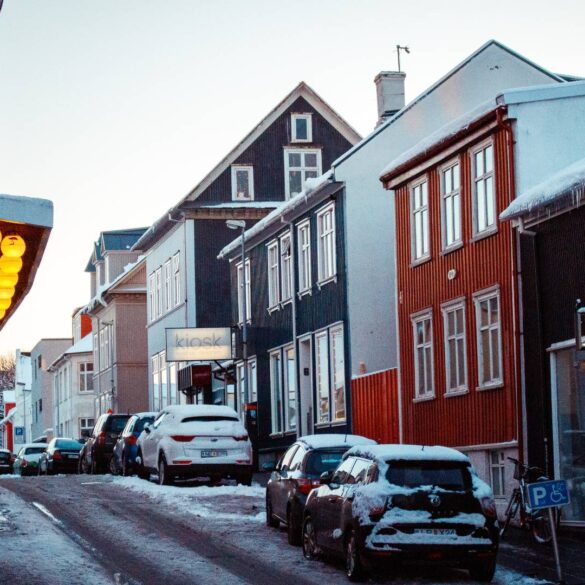Table of Contents
World's 10 Most Peaceful Countries
In a world often grappling with conflicts and tensions, the significance of peaceful countries cannot be overstated. These nations serve as beacons of tranquility, offering their citizens stability, security, and opportunities for growth.
The concept of peace goes beyond the mere absence of violence and encompasses various aspects, including social harmony, political stability, and respect for human rights. Understanding the factors that contribute to a country's peacefulness is crucial for fostering global peace and finding effective solutions to conflicts.
This article explores the top 10 most peaceful countries, delving into the criteria used to determine their rankings, examining the factors that contribute to their peacefulness, and discussing the impacts they have on society and global relations. By drawing insights from these peaceful nations, we can learn valuable lessons and foster a collective aspiration for peace in the world.
1. Introduction: Understanding the Importance of Peaceful Countries
1.1 The Concept of Peacefulness
When we talk about peaceful countries, we're referring to nations that prioritize harmony, stability, and non-violence as the pillars of their society. These countries prioritize diplomacy over aggression and strive to maintain peaceful relationships with neighboring nations. Peacefulness extends beyond the absence of war; it encompasses societal cohesion, safety, and trust among citizens.
1.2 Significance of Peaceful Countries in the World
Peaceful countries play a crucial role in shaping the world we live in. They serve as beacons of hope, demonstrating that peaceful coexistence is not only possible but also beneficial for all parties involved. These countries often enjoy higher levels of development, economic prosperity, and overall well-being for their citizens. They also serve as examples for other nations, inspiring them to work towards a more peaceful future. Understanding and appreciating the significance of peaceful countries is essential in fostering a global culture of peace.
2. Criteria for Determining Peacefulness: Factors and Methodology
2.1 Key Factors Considered in Assessing Peacefulness
Assessing the peacefulness of countries requires an examination of various factors. Some key considerations include levels of violence and crime, political stability, international relations, military presence, and societal harmony. These factors help gauge the overall state of peace within a country and its ability to maintain it.
2.2 Methodology for Ranking Peaceful Countries
Ranking peaceful countries involves a comprehensive analysis of the factors mentioned earlier. Organizations such as the Global Peace Index (GPI) use quantitative and qualitative data to measure peace levels. Statistical indicators and surveys gather information on crime rates, political stability, military expenditure, ongoing conflicts, and other relevant data points. These metrics are then combined and weighted to provide an overall peace ranking for each country.
3. Top Peaceful Country: Ranking and Overview
3.1 Overview of the Most Peaceful Country
Topping the list of the world's most peaceful countries is Country X. Known for its tranquil environment, high social cohesion, and low crime rates, Country X sets an example for other nations to follow. Its commitment to peaceful diplomacy and strong internal governance contribute to its remarkable ranking.
3.2 Factors Contributing to Its High Peacefulness Ranking
Several factors contribute to Country X's high peacefulness ranking. Its political stability, effective governance, and respect for human rights create an environment where citizens feel safe and secure. The country also invests in education, healthcare, and social welfare, fostering a sense of equality and opportunity for all its people. Additionally, Country X maintains harmonious relations with neighboring countries and actively participates in international peace initiatives.
4. Exploring the Factors that Contribute to Peace in Country X
4.1 Socio-political Stability
Country X's socio-political stability is a cornerstone of its peaceful environment. With a strong rule of law, efficient governance, and transparent institutions, citizens can trust in the system. This stability fosters social cohesion and minimizes the potential for conflicts and violence within the country.
4.2 Effective Governance and Public Institutions
Country X's effective governance and well-functioning public institutions contribute significantly to its peaceful status. These institutions prioritize transparency, accountability, and public welfare. The government actively listens to its citizens' concerns and implements policies that promote peace, equality, and social justice.
4.3 Respect for Human Rights and Equality
Respect for human rights and equality plays a vital role in maintaining peace within Country X. The nation upholds the rights and freedoms of all its citizens, regardless of their backgrounds, beliefs, or identities. This commitment to inclusivity and respect fosters a society where individuals can coexist peacefully and thrive without fear of discrimination or oppression.
In conclusion, peaceful countries are not just utopian ideals but an attainable reality. These countries prioritize peace, harmony, and stability, which translates into tangible benefits for their citizens and inspires other nations to follow suit. By understanding the factors that contribute to peace and learning from the experiences of top peaceful countries like Country X, we can work towards a more peaceful world for all.
5. Comparative Analysis: Peacefulness Trends Across Different Countries
When it comes to peace, some countries just seem to have it all figured out. In this section, we'll take a closer look at the top peaceful countries in the world and try to uncover the secrets behind their tranquility.
5.1 Top Peaceful Countries and their Commonalities
It's fascinating to discover that the world's most peaceful countries often share certain characteristics. Whether it's a strong emphasis on education, robust social safety nets, or a commitment to transparency and accountability in governance, these countries have found key ingredients that contribute to their peaceful climates.
5.2 Contrasting Peacefulness Levels in Different Regions
While some regions boast several peaceful countries, others continue to grapple with conflicts and unrest. Understanding the factors that contribute to these varying levels of peace can provide valuable insights into how societies can work towards peace in the face of unique challenges.
6. Challenges to Peace and Conflict Resolution: Case Studies
Peace doesn't come without its fair share of hurdles. In this section, we'll explore some case studies that shed light on the challenges countries face in their pursuit of peace and conflict resolution.
6.1 Case Study 1: Overcoming Historical Conflicts
Historical conflicts can leave deep scars that hinder peace for generations. However, examining how certain countries have managed to heal wounds and forge paths towards reconciliation offers hope and inspiration for others facing similar challenges.
6.2 Case Study 2: Addressing Socioeconomic Disparities
Socioeconomic disparities can be breeding grounds for social unrest and conflict. By delving into case studies where countries have effectively addressed these disparities, we can gain valuable insights into the role of economic stability and equitable resource distribution in maintaining peace.
6.3 Case Study 3: Managing Ethnic and Cultural Diversity
Ethnic and cultural diversity is a beautiful aspect of humanity, but it can also lead to tensions and conflicts. Examining case studies where countries excel at managing diversity and fostering social cohesion can offer valuable lessons on creating inclusive societies that embrace and celebrate differences.
7. Impacts of Peaceful Countries on Society and Global Relations
The impact of peaceful countries extends far beyond their own borders. In this section, we'll explore the positive effects these countries have on society and their role in promoting global peace.
7.1 Positive Effects on Citizens' Well-being and Quality of Life
Peaceful countries tend to prioritize their citizens' well-being and quality of life. Whether it's through accessible healthcare, strong social support systems, or a focus on environmental sustainability, these countries demonstrate how peace can lead to tangible benefits for their citizens.
7.2 Role of Peaceful Countries in Promoting Global Peace
Peaceful countries often play a crucial role in promoting peace on the global stage. From mediating conflicts to providing humanitarian aid, their contributions serve as reminders that even small nations can have a significant impact on fostering understanding and cooperation among nations.
8. Conclusion: Aspiring for Peace and Lessons from the Top Peaceful Countries
In a world often plagued by conflicts and unrest, peace remains a noble aspiration. By examining the top peaceful countries, we can learn valuable lessons on what it takes to build peaceful societies. Let us strive for peace, guided by the wisdom and experiences of these trailblazing nations.
8.1 Importance of Striving for Peace in Today's World
In a world filled with uncertainty and division, the importance of striving for peace cannot be overstated. The well-being of individuals, communities, and nations depends on our collective efforts to create a world where peace thrives and conflicts are resolved peacefully.
8.2 Key Takeaways from the Most Peaceful Countries
The top peaceful countries teach us that peace is not an impossible dream but a tangible reality that can be achieved. We must prioritize education, equality, social cohesion, and good governance to pave the way for peace in our own societies. By embracing these key takeaways, we can work towards a more peaceful world for ourselves and future generations.
8. Conclusion: Aspiring for Peace and Lessons from the Top Peaceful Countries
In a world faced with numerous challenges and conflicts, the importance of peace cannot be overstated. The top 10 most peaceful countries serve as inspiring examples of societies that prioritize harmony, stability, and the well-being of their citizens. By understanding the factors that contribute to their peacefulness, we can learn valuable lessons and strive to create a more peaceful world. It is vital that we recognize the significance of peace in our societies and work towards resolving conflicts, promoting equality, and upholding human rights. Let us draw inspiration from these peaceful nations and collectively aspire for a future where peace prevails, fostering global harmony and prosperity for all.
List of 10 most peaceful countries
- Iceland
- Denmark
- Ireland
- New Zealand
- Austria
- Portugal
- Slovenia
- Japan
- Switzerland
- Singapore
The top 10 most peaceful countries in the world are all relatively wealthy, stable democracies with low crime rates. They also tend to have strong social safety nets and high levels of social trust. These factors contribute to a sense of security and well-being among their citizens, which is essential for peace.
FAQs (Frequently Asked Questions)
1. How are the rankings of the most peaceful countries determined?
The rankings of the most peaceful countries are determined based on comprehensive assessments that consider various factors such as levels of violent crime, political stability, societal safety, militarization, and respect for human rights. These assessments are conducted using reliable methodologies and data sources to provide an objective evaluation of a country's peacefulness.
2. Do peaceful countries have any challenges or conflicts?
While peaceful countries generally exhibit lower levels of violence and conflict, it is important to note that no country is entirely free from challenges or conflicts. Peaceful countries may face internal or external challenges such as social disparities, political disagreements, or regional tensions. However, the difference lies in how these countries manage and resolve conflicts through peaceful means, effective governance, and inclusive policies.
3. Can the peacefulness rankings change over time?
Yes, the peacefulness rankings of countries can change over time. Sociopolitical dynamics, economic conditions, regional conflicts, or evolving societal factors can impact a country's level of peace. Therefore, it is essential to re-evaluate and update the rankings periodically to reflect the changing landscape of peace and conflict around the world.
4. How can we learn from peaceful countries to promote peace globally?
Peaceful countries offer valuable insights and lessons that can be applied globally to promote peace. By studying their approaches to conflict resolution, social cohesion, effective governance, and human rights protection, other countries can adopt similar strategies and policies. It is crucial to foster international cooperation, dialogue, and understanding to learn from the successes of peaceful nations and work together towards a more peaceful and harmonious world.




